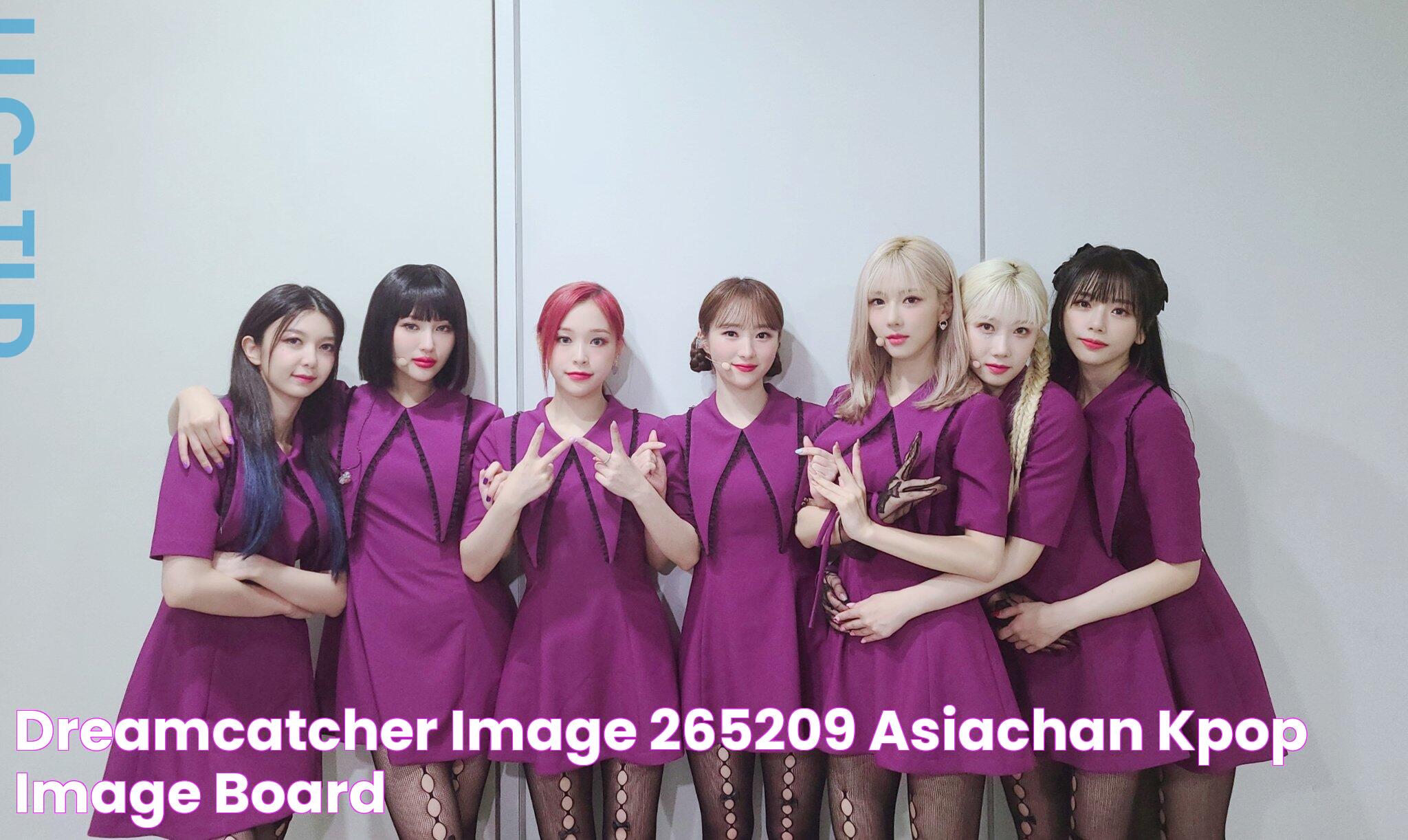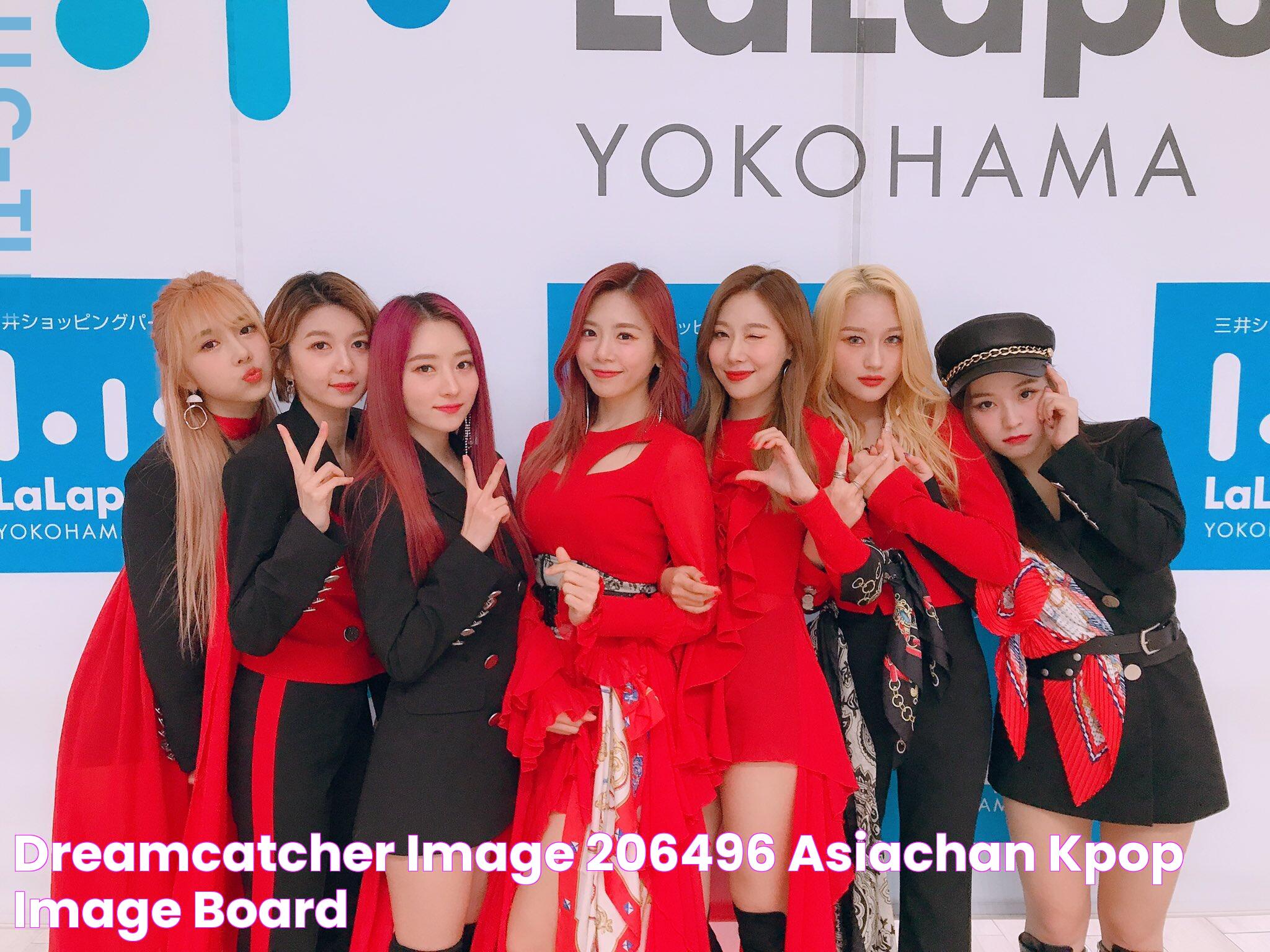Dreamcatcher Kpop is a name that has taken the global music industry by storm, blending unique concepts with captivating performances to carve out a niche of their own. Known for their dark, rock-infused sound and innovative storytelling, Dreamcatcher stands as a refreshing anomaly in the Kpop world. Their ability to seamlessly merge hauntingly beautiful visuals with anthemic music has earned them a dedicated fanbase worldwide, affectionately known as InSomnia.
Since their rebranding in 2017, Dreamcatcher has constantly challenged the conventional boundaries of Kpop. From their visually striking music videos to their genre-defying discography, they have grown to become one of the most talked-about acts in the industry. With themes often revolving around nightmares, dreams, and fantasy, Dreamcatcher has successfully built an artistic identity that is both intriguing and unforgettable.
As the group continues to gain recognition across various platforms, including Google Discover, their influence is only set to grow. This article will delve deep into the world of Dreamcatcher Kpop, exploring their journey, discography, achievements, and why they're a force to be reckoned with in the ever-evolving landscape of global music.
Read also:Ultimate Guide To Shoulder Length Bob Haircuts For Women
Table of Contents
- Who is Dreamcatcher? Biography of the Group
- What Made Dreamcatcher Stand Out After Rebranding?
- Meet the Members: Profiles and Roles
- How Does Dreamcatcher's Unique Concept Resonate with Fans?
- The Signature Sound: What Defines Dreamcatcher's Music Style?
- Complete Discography: Albums, EPs, and Singles
- Major Achievements and Awards
- Global Impact: How Dreamcatcher is Redefining Kpop
- Why Are InSomnia So Loyal to Dreamcatcher?
- Dreamcatcher on Social Media: Building a Digital Presence
- Memorable Tours and Concerts
- Notable Collaborations and Features
- What Does the Future Hold for Dreamcatcher?
- FAQs About Dreamcatcher Kpop
- Conclusion
Who is Dreamcatcher? Biography of the Group
Dreamcatcher is a South Korean girl group formed by Dreamcatcher Company (formerly known as Happyface Entertainment) in 2017. Initially introduced as MINX in 2014, the group underwent a major rebranding to adopt a darker, more gothic aesthetic and a rock-infused sound, which set them apart from other Kpop acts. Debuting with the single album Nightmare, Dreamcatcher quickly established themselves as pioneers of the "nightmare concept" in Kpop.
Dreamcatcher's Bio Data
| Group Name | Dreamcatcher |
|---|---|
| Debut Date | January 13, 2017 |
| Former Name | MINX |
| Agency | Dreamcatcher Company |
| Genres | Kpop, Rock, EDM |
| Fanbase Name | InSomnia |
What Made Dreamcatcher Stand Out After Rebranding?
Dreamcatcher's transformation from MINX to their current identity was a groundbreaking move. The change not only involved a shift in musical style but also introduced the group to a new set of concepts that revolved around dreams, nightmares, and fantasy. This thematic consistency helped create a strong narrative that unfolded over their subsequent releases.
Key Aspects of Their Rebranding
- The Nightmare Series: Their debut album, Nightmare, and its sequels explored dark and compelling stories, setting a precedent for conceptual storytelling in Kpop.
- Visual Identity: Dreamcatcher embraced gothic attire, eerie visuals, and intricate choreography, which became hallmarks of their brand.
- Musical Evolution: Incorporating rock and EDM elements, Dreamcatcher distinguished their sound from the lighter, bubblegum pop typical of other Kpop groups.
The rebranding was not without risks, as it deviated from the traditional Kpop formula. However, it proved to be a masterstroke that established Dreamcatcher as a trailblazer in the genre.
Meet the Members: Profiles and Roles
Dreamcatcher consists of seven talented members, each bringing their unique charm and skills to the group. Here's a closer look at the members:
Profiles of Dreamcatcher Members
| Name | Role | Birthday |
|---|---|---|
| JiU | Leader, Lead Vocalist, Lead Dancer | May 17, 1994 |
| SuA | Main Dancer, Lead Rapper, Vocalist | August 10, 1994 |
| Siyeon | Main Vocalist | October 1, 1995 |
| Handong | Vocalist | March 26, 1996 |
| Yoohyeon | Lead Vocalist | January 7, 1997 |
| Dami | Main Rapper, Lead Dancer, Vocalist | March 7, 1997 |
| Gahyeon | Sub Vocalist, Maknae | February 3, 1999 |
How Does Dreamcatcher's Unique Concept Resonate with Fans?
Dreamcatcher's concept is one of the most distinctive in Kpop, drawing inspiration from elements of horror, fantasy, and gothic storytelling. Their "nightmare concept" explores the duality of dreams and reality, often portraying the members as otherworldly beings trapped in ethereal narratives.
Why Fans Love the Concept
- Relatable Themes: The exploration of fears and dreams resonates with fans on a personal level.
- Visual Excellence: Their music videos are cinematic masterpieces, filled with intricate details and symbolism.
- Consistency: Dreamcatcher has maintained a cohesive narrative over multiple projects, creating a deep and immersive lore.
This innovative approach has allowed Dreamcatcher to build a loyal fanbase that appreciates their creativity and artistic depth.
Read also:Oil Diffuser Your Ultimate Guide To Aromatherapy Bliss
The Signature Sound: What Defines Dreamcatcher's Music Style?
Dreamcatcher's music is a genre-defying blend of rock, EDM, and pop, characterized by powerful vocals, dynamic instrumentals, and thought-provoking lyrics. Unlike many Kpop groups that stick to mainstream pop, Dreamcatcher boldly incorporates electric guitars, intense drum beats, and haunting melodies into their songs.
Musical Highlights
- Rock Influence: Tracks like "Chase Me" and "Good Night" showcase their rock roots.
- Dynamic Range: Songs such as "Deja Vu" and "Scream" demonstrate their ability to balance softness with intensity.
- Experimental Spirit: Dreamcatcher is not afraid to experiment with genres, as seen in their EDM-heavy tracks like "Boca."
This unique sound has not only set them apart but also earned them critical acclaim and a growing international audience.
FAQs About Dreamcatcher Kpop
1. What is the meaning behind the name Dreamcatcher?
The name represents the group's connection to dreams and nightmares, symbolizing their role as protectors who "catch" bad dreams through their music and artistry.
2. When did Dreamcatcher debut?
Dreamcatcher officially debuted on January 13, 2017, with the single album Nightmare.
3. What is the name of Dreamcatcher's fanbase?
Dreamcatcher's fanbase is called InSomnia, which means "in dreams" and reflects the fans' deep connection with the group's dream-inspired concept.
4. What genre of music does Dreamcatcher primarily produce?
Dreamcatcher is known for their rock-infused Kpop sound, blending elements of rock, EDM, and pop into their music.
5. What was Dreamcatcher's first music video?
Their first music video was for the song "Chase Me," which set the tone for their nightmare concept.
6. Has Dreamcatcher won any major awards?
Yes, Dreamcatcher has won several awards, including the "Best Music Video" award at the 2020 Korean Music Awards for their song "Scream."
Conclusion
Dreamcatcher Kpop has proven to be a game-changer in the global music scene, thanks to their innovative concepts, genre-defying music, and dedicated fanbase. As they continue to break barriers and redefine what it means to be a Kpop group, Dreamcatcher's influence is set to endure for years to come. If you haven't already, now is the perfect time to dive into their captivating world and experience the magic they bring to the stage.


